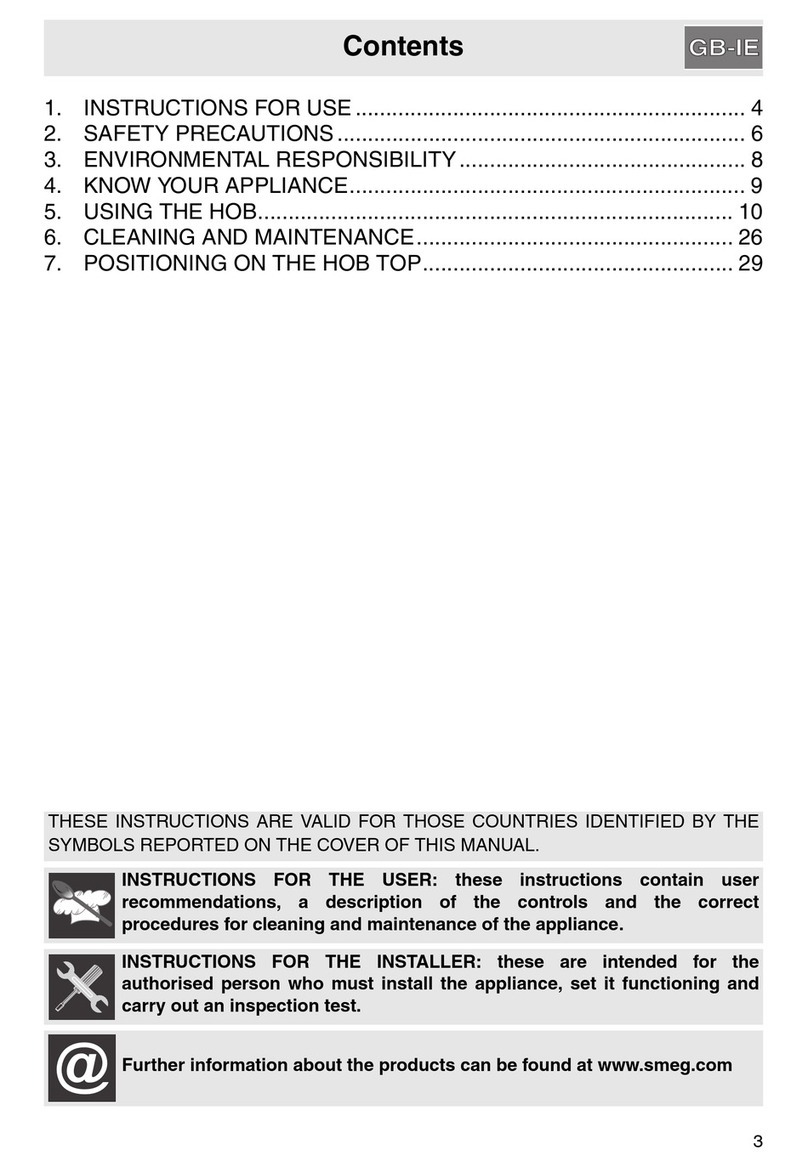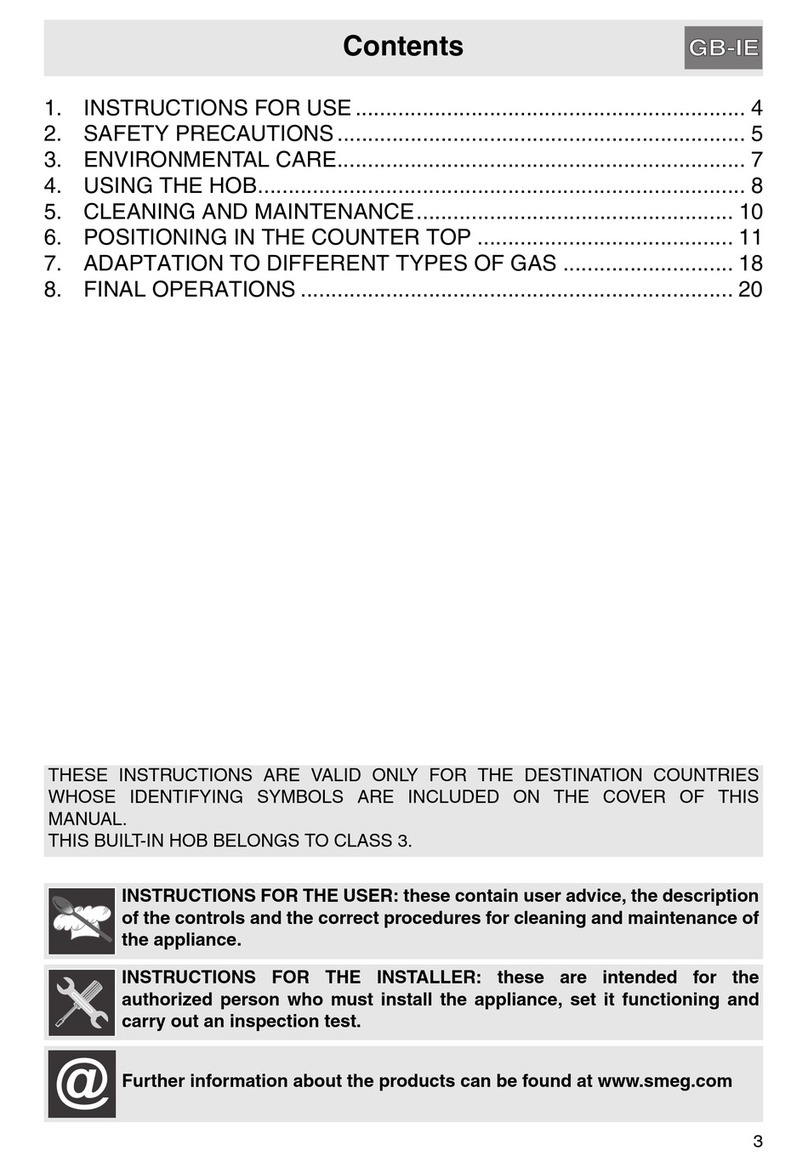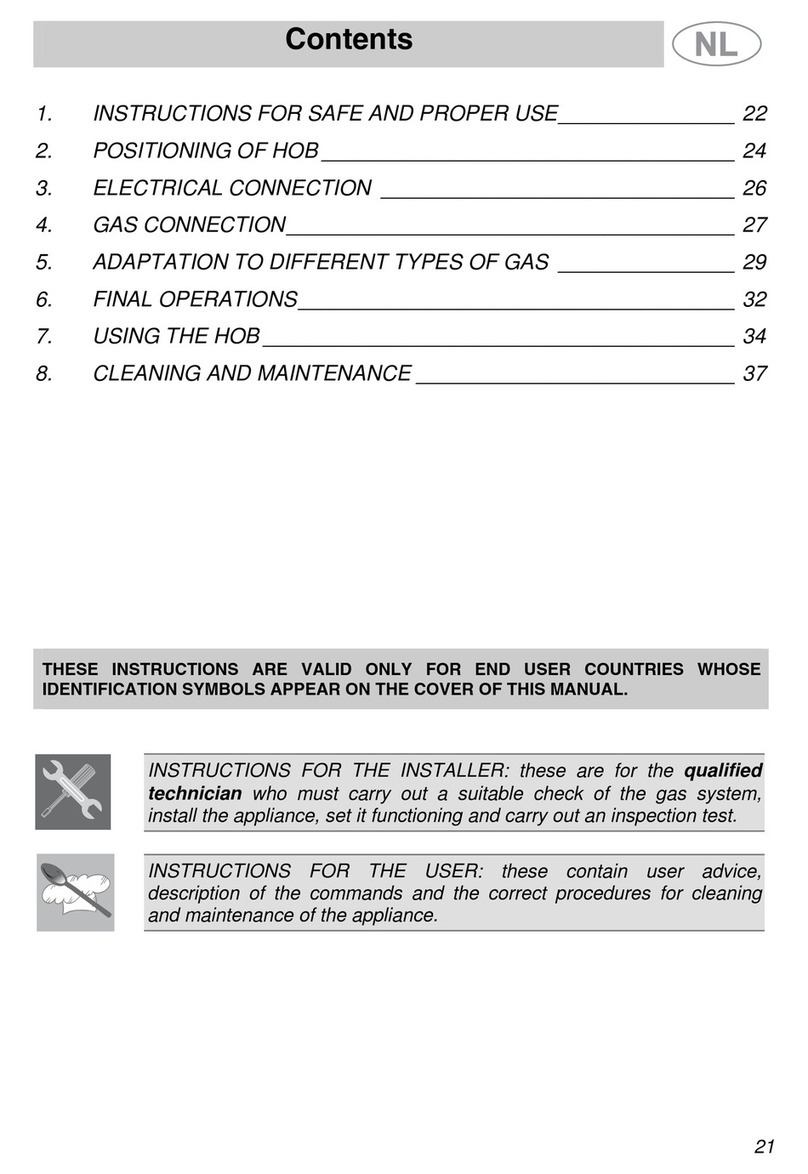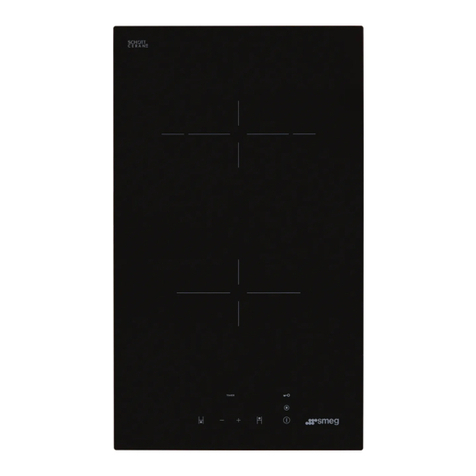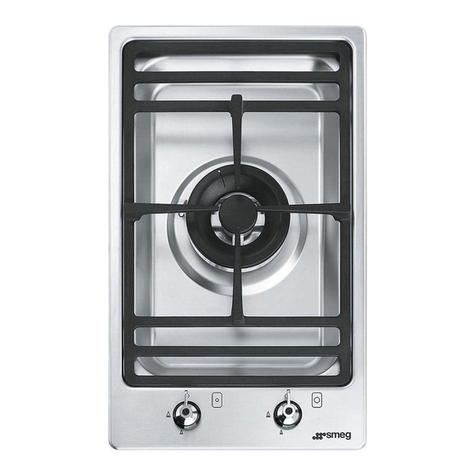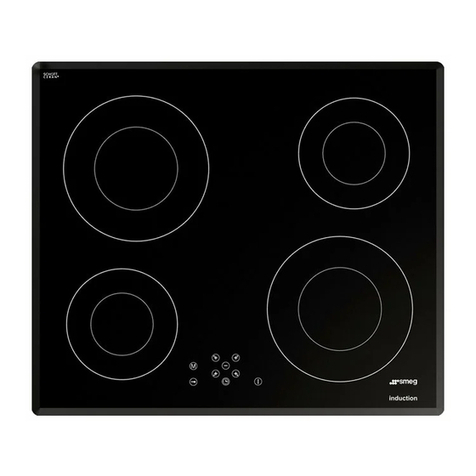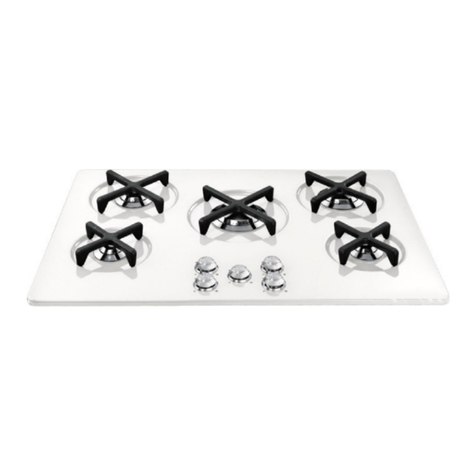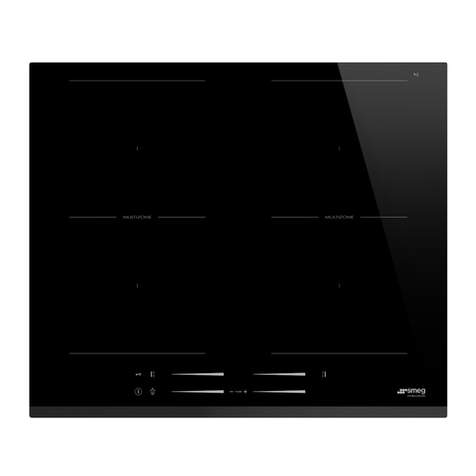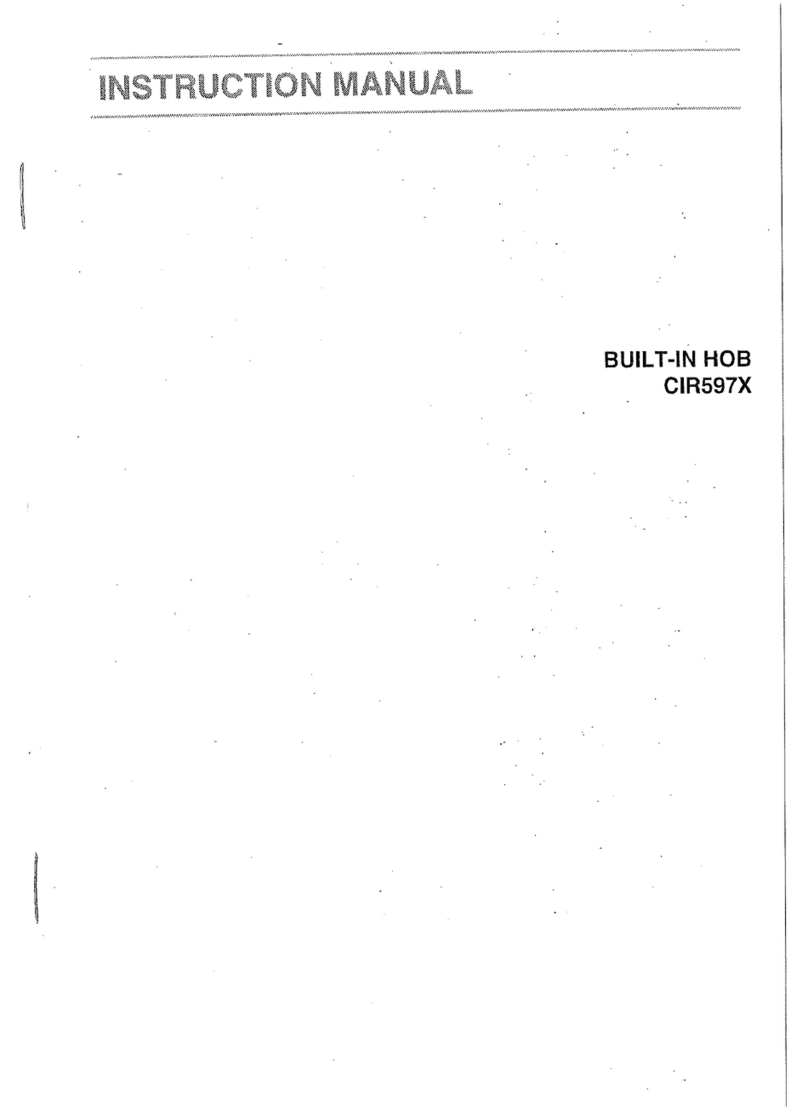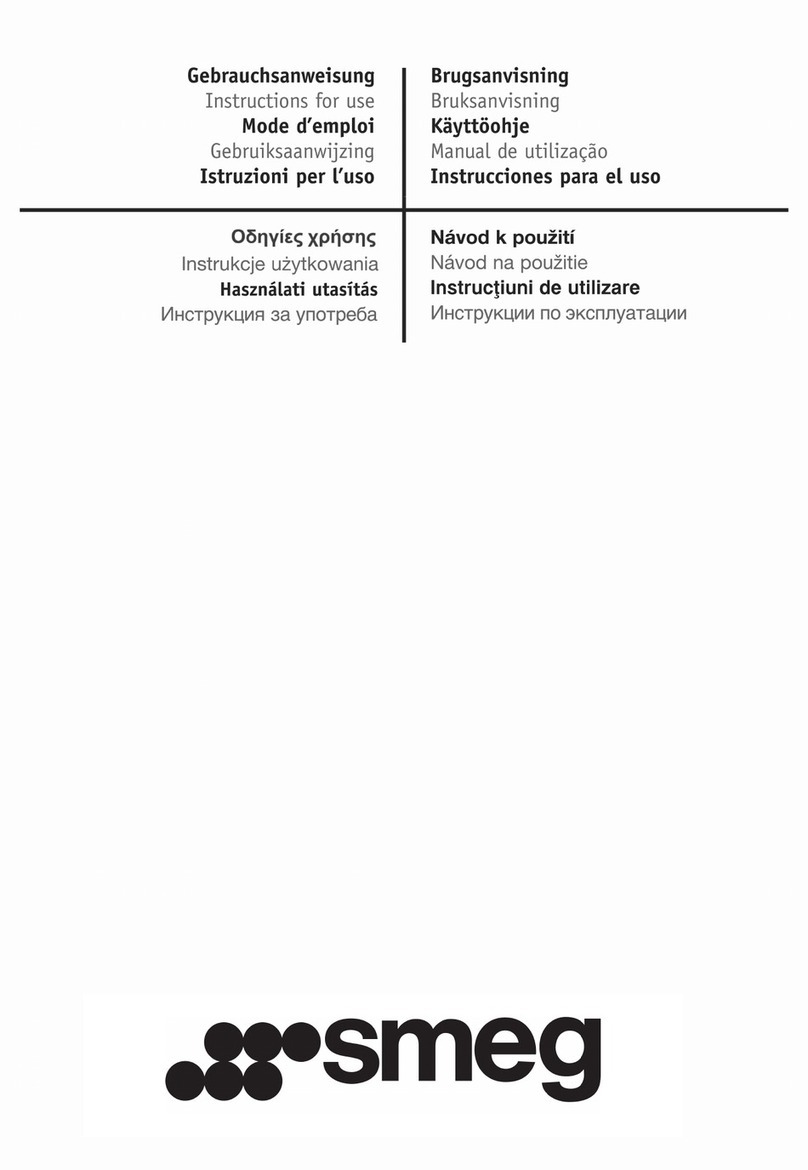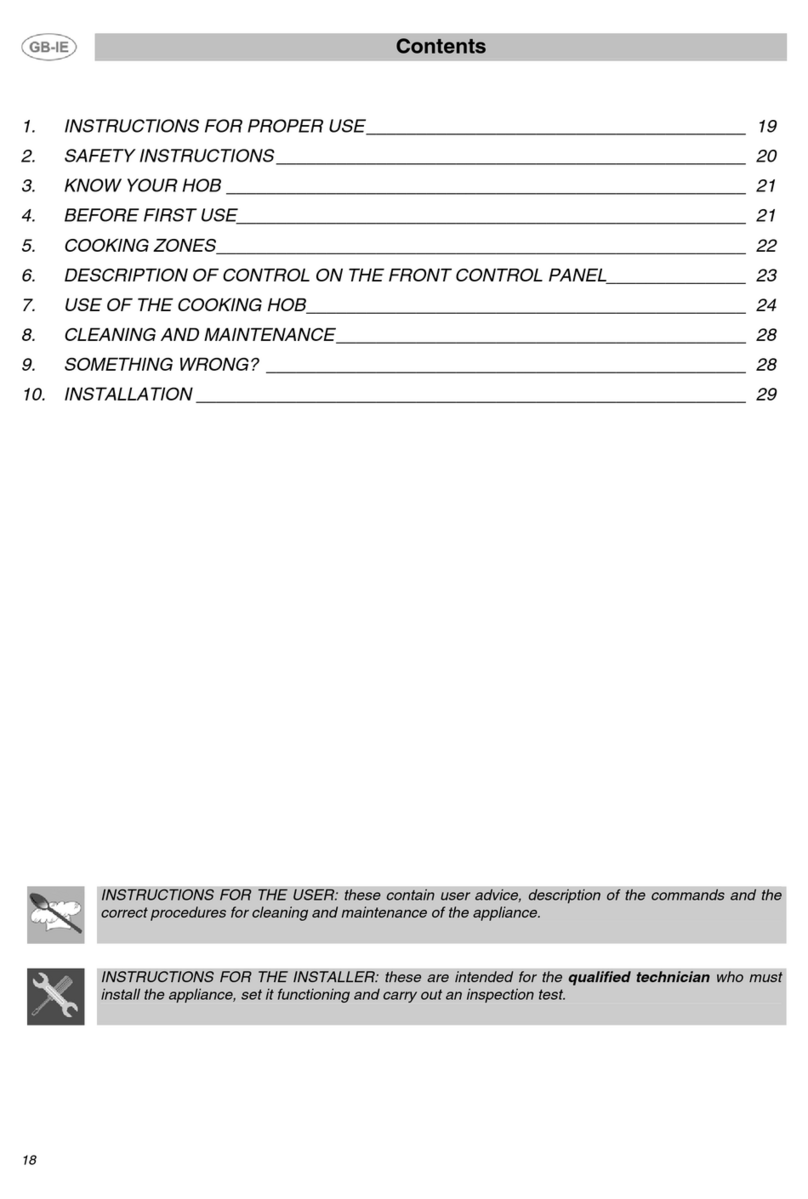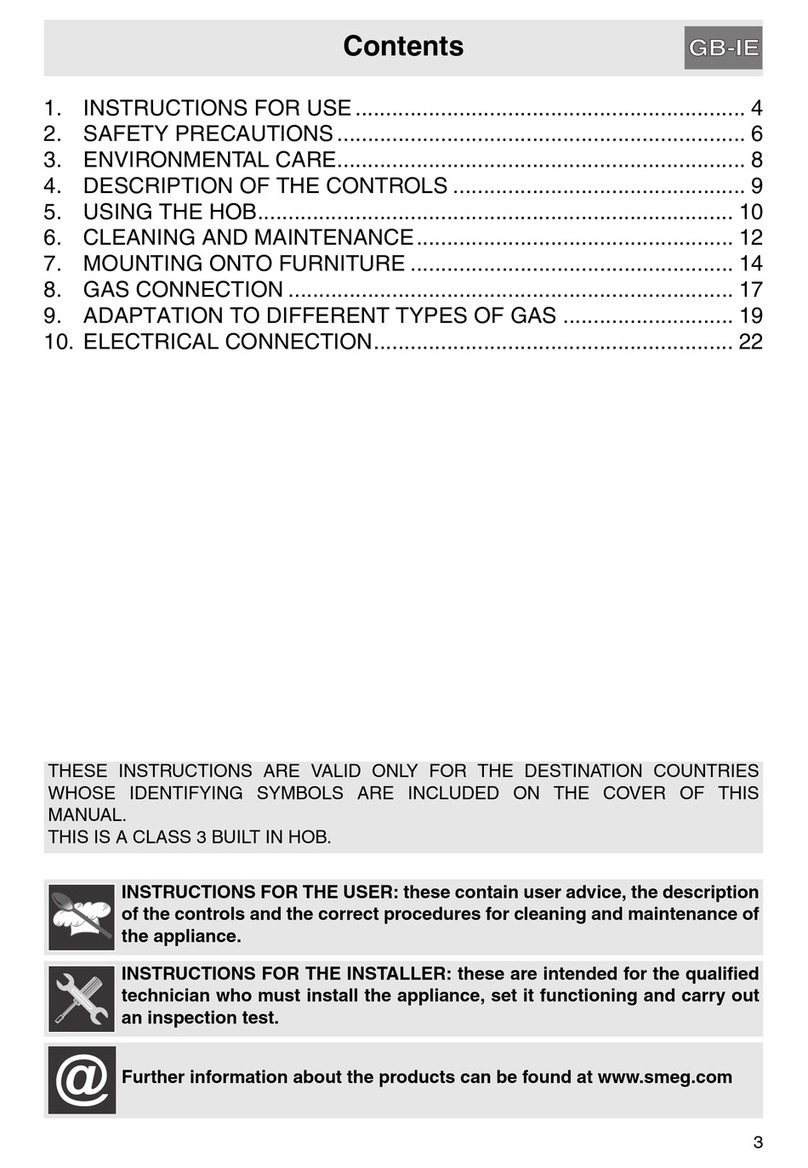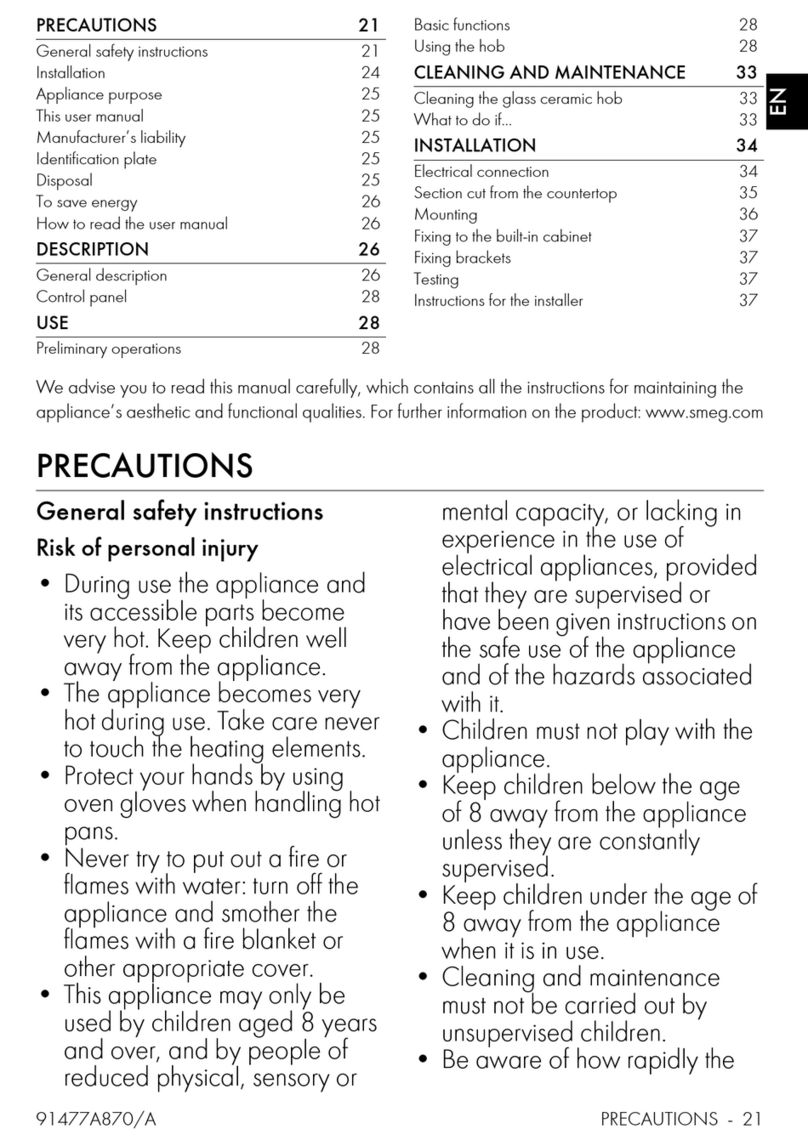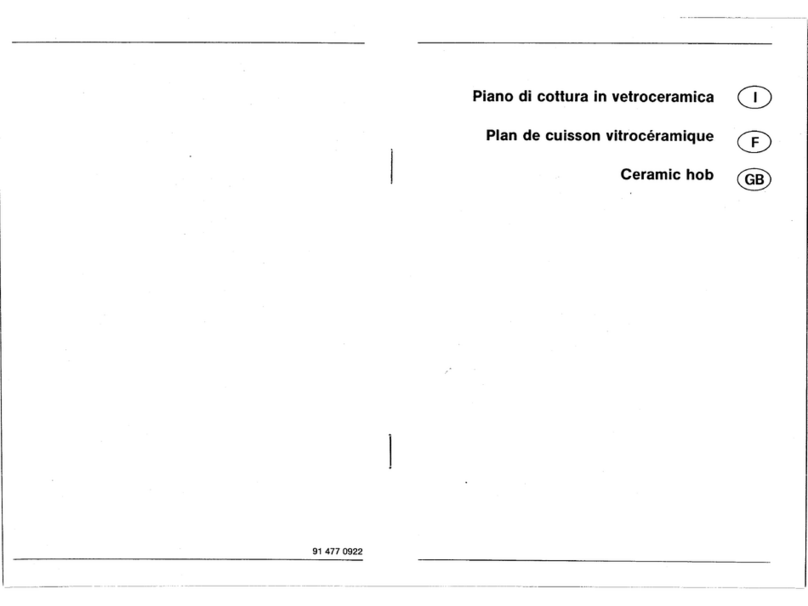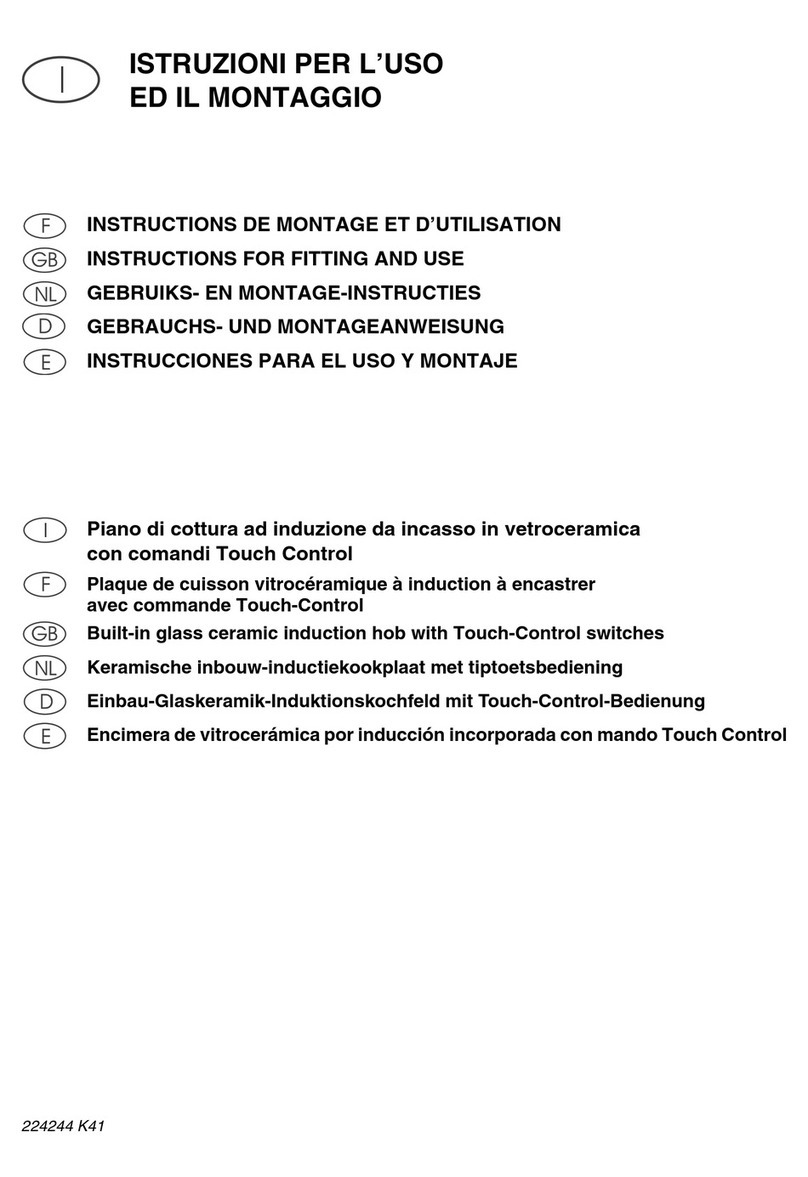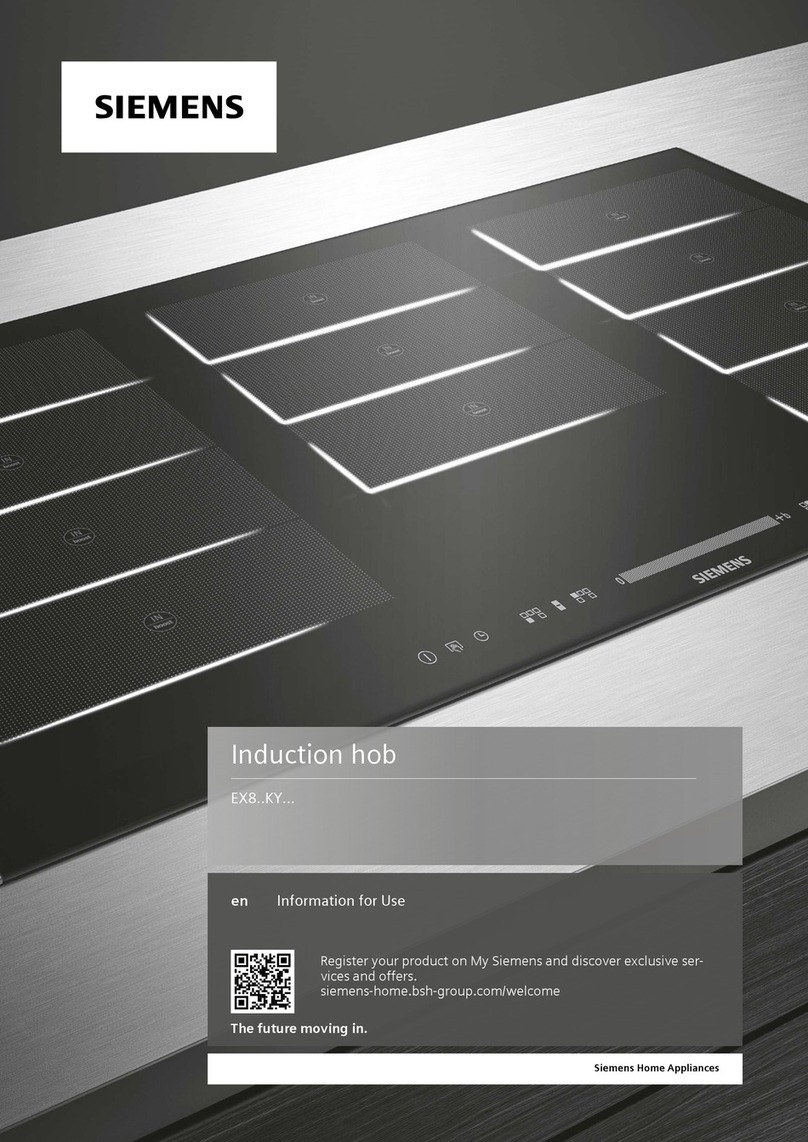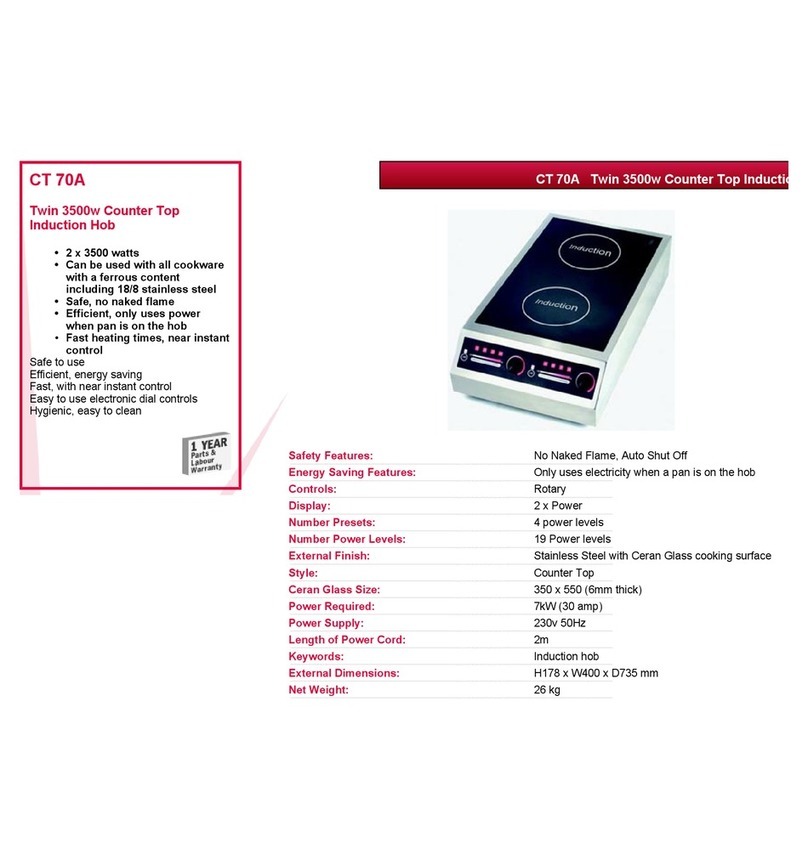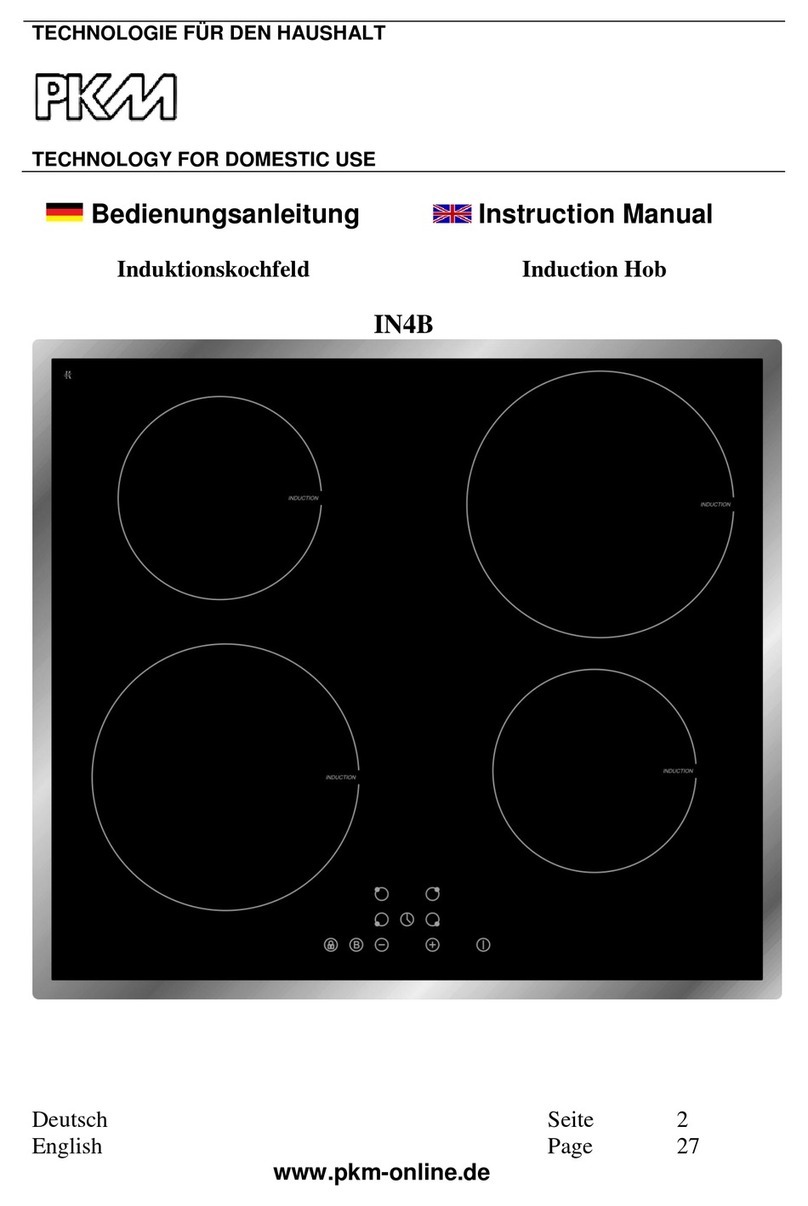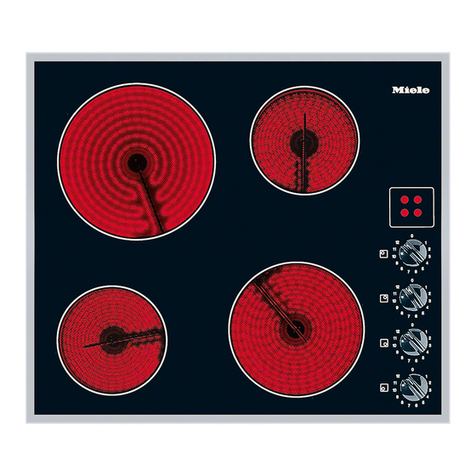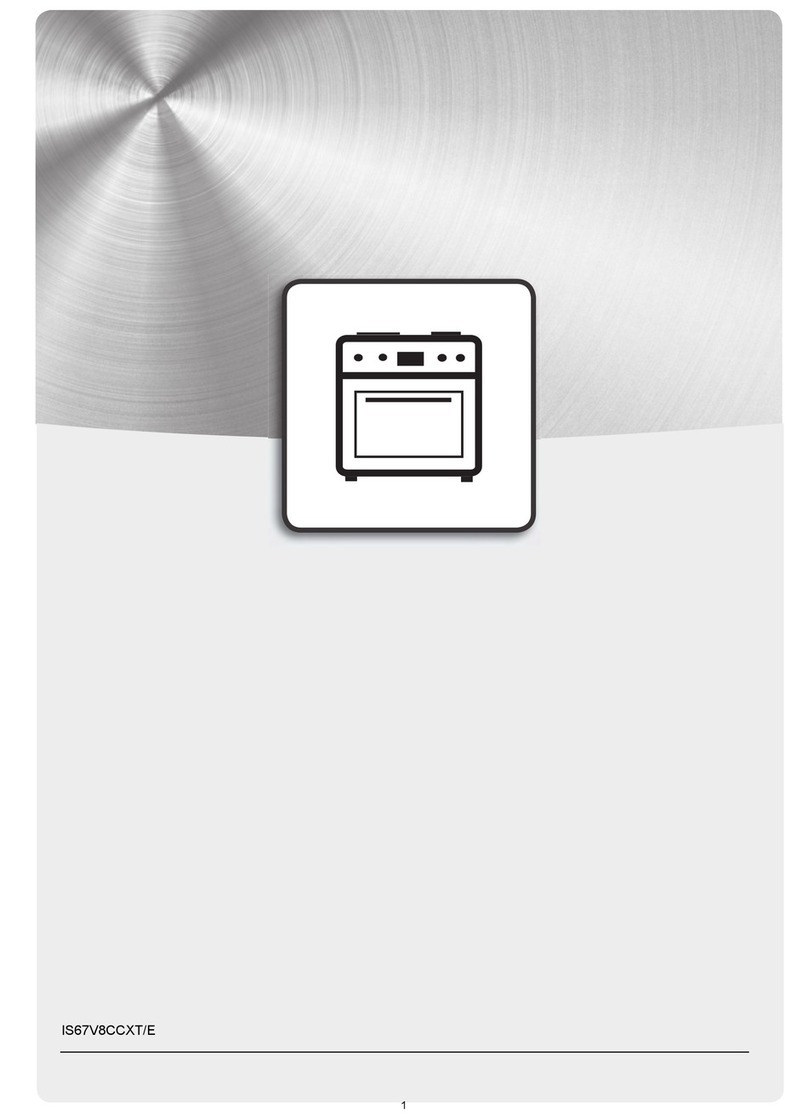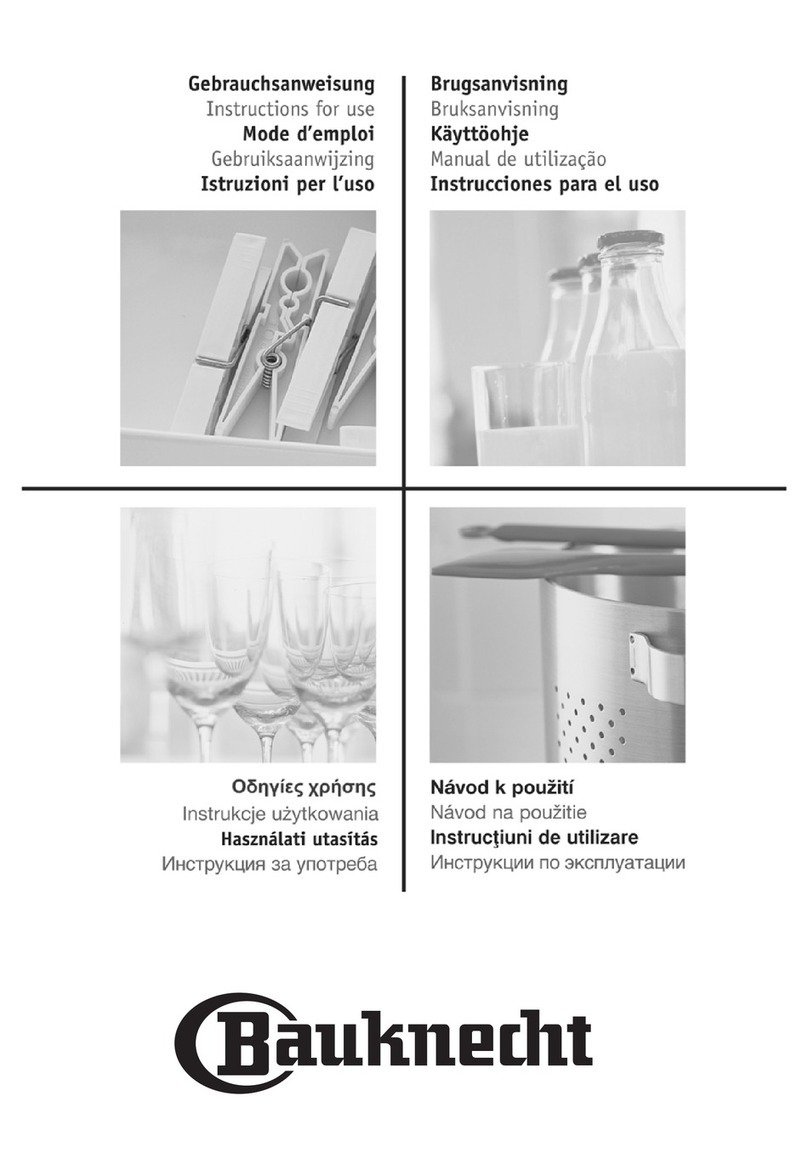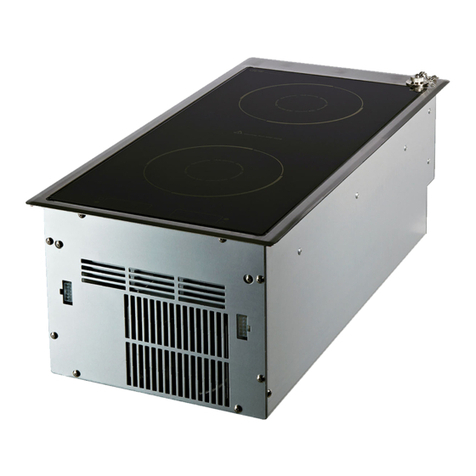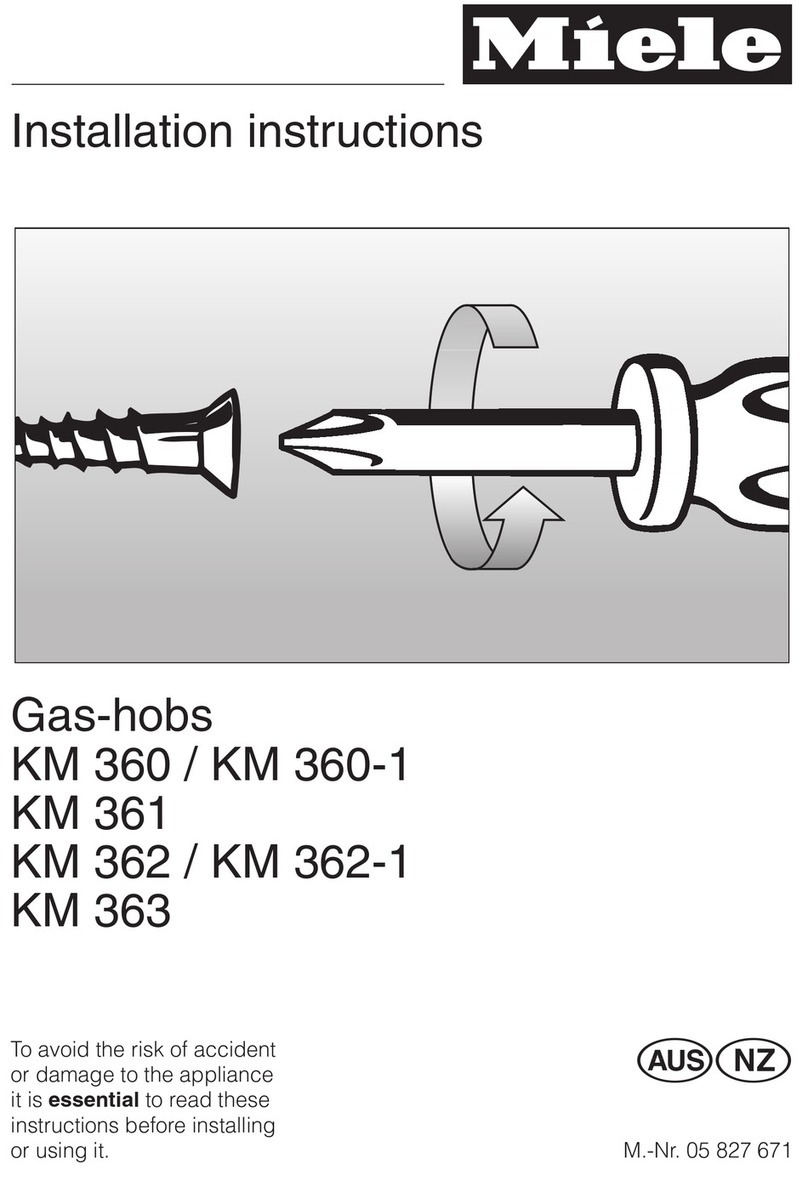
30 - CLEANING AND MAINTENANCE 91477A898/A
them thoroughly and return them to the hob.
Flame-spreader crown and burner caps
For easier cleaning, the flame-spreader crowns
and the burner caps can be removed. Wash
them in hot water and non-abrasive detergent.
Carefully remove any encrustation, then wait
until they are perfectly dry. Replace the flame-
spreader crowns, making sure that they are
correctly positioned in their housings with their
respective burner caps.
Igniters and thermocouples
For correct operation the igniters and
thermocouples must always be perfectly clean.
Check them frequently and clean them with a
damp cloth if necessary. Remove any dry
residues with a wooden toothpick or a needle.
Cleaning the hob
Cleaning the surfaces
To keep the surfaces in good condition, they
should be cleaned regularly after use. Let them
cool first.
Ordinary daily cleaning
Always and only use specific products that do
not contain abrasives or chlorine-based acids.
Pour the product onto a damp cloth and wipe
the surface, rinse thoroughly and dry with a soft
cloth or a microfibre cloth.
Weekly cleaning
Clean and maintain the hob once a week using
an ordinary glass cleaning product. Always
follow the manufacturer’s instructions. The silicon
in these products creates a protective, water-
repellent membrane which also resists dirt. All
marks stay on the membrane and can therefore
be removed easily. After cleaning, dry the
surface with a clean cloth. Make sure that there
is no detergent left on the cooking surface as it
might undergo an aggressive reaction when
heated up and could modify the structure of the
cooking surface.
Food stains or residues
Light coloured marks from pans with aluminium
bases can be easily cleaned off with a cloth
moistened in vinegar. Remove any burnt-on
residues after cooking; then rinse with water and
dry thoroughly with a clean cloth. Changes in
colour do not affect the operation and stability
of the glass. These are not alterations to the
material of the hob but just residues which have
not been removed and have then carbonised.
Shiny surfaces can form due to the use of
inappropriate cleaning products. They are
difficult to remove using conventional cleaning
products. It may be necessary to repeat the
cleaning process several times. Using harsh
detergents can wear away the decoration on
the hob over time and contribute to the
formation of stains.
What to do if...
The hob does not work:
• Make sure that the hob is connected and
that the main switch is turned on.
• Make sure that there is no power failure.
• Make sure that the fuse has not blown. In
this case replace the fuse.
• Make sure that the circuit breaker of the
residential electrical system has not tripped.
In this case, reset the circuit breaker.
The cooking results are unsatisfactory:
• Make sure that the hob is properly
The continuous contact between the
pan supports and the flame can cause
modifications to the enamel over time in
those parts exposed to heat. This is a
completely natural phenomenon which
has no effect on the operation of this
component.
See General safety instructions.
We recommend the use of cleaning
products distributed by the
manufacturer.
After cleaning, dry the appliance
thoroughly to prevent any water or
detergent from interfering with its
operation or creating unsightly marks.

